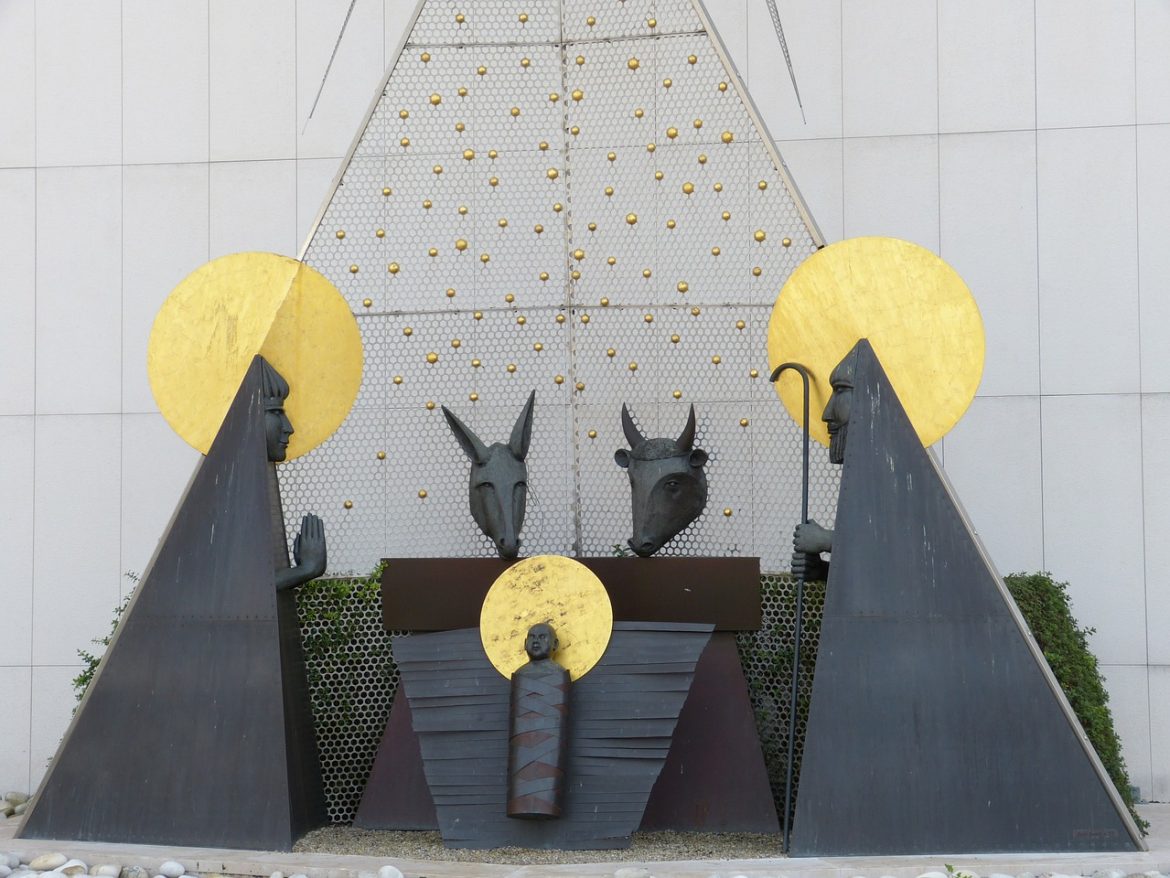We are now in the last week of Advent. Yesterday we lit the fourth Advent candle, the Peace or Angel’s candle, and now we wait in joyful expectation for the celebration of the birth of Christ once more. The question is, “To where will we welcome him?” Do we really want him moving into our homes or is easier to relegate him to the stable, to see him as an outsider, not really part of the family? Seeing Jesus in an out-of-the-way place where disreputable people like shepherds can come to worship without us having to worry about them messing up our homes makes life easy for us. We get that glow that tells us Jesus is here, but there is very little commitment required of us.
According to New Testament theologian Kenneth Bailey in his wonderful book Jesus Through Middle Eastern Eyes, Middle Eastern cultures are known for their hospitality and Joseph was coming home with a new wife and an expected first child so there is no way they would have been relegated to the stable. The whole family was gathering, aunts and uncles, cousins and brothers and sisters. All of them coming home. Yes, there was a census that brought them together–but in a fun-loving culture like this, it would not have diminished the welcome or the excitement of a homecoming gathering. The expectation of a baby to be born in their midst would only have increased the excitement.
As Kenneth Bailey explains, the Greek word (katalyma or kataluma) translated as inn in Luke 2:7 does not mean a commercial building with rooms for travelers. It’s a guest space, typically the upper room of a common village home.
“A simple village home in the time of King David, up until the Second World War, in the Holy Land, had two rooms—one for guests, one for the family. The family room had an area, usually about four feet lower, for the family donkey, the family cow, and two or three sheep. They are brought in last thing at night and taken out and tied up in the courtyard first thing in the morning.
“Out of the stone floor of the living room, close to family animals, you dig mangers or make a small one out of wood for sheep. Jesus is clearly welcomed into a family home,” See the entire article here
It was to this simple village home that the shepherds and Wise Men alike came. Shepherds despised and regarded as unclean by their society, are visited by angels and invited to join the great homecoming celebration that marks the arrival of the child who will become the Messiah. That they were welcomed and not turned away from this home is remarkable. This is good news indeed for the outcast and the despised.
Then the Wise Men come, according to Bailey–rich men on camels, probably from Arabia. And they come not to the city of Jerusalem where the Jews thought God’s glory would shine, but to the child born in a manager around whom there is already a great light. The Wise Men come to find a new home; a new place of belonging that has beckoned to them across the world. This too is remarkable and good news for people of all nations who long for a place to call home.
Bailey tells us that the birth stories of Jesus “de-Zionize” the Messianic traditions. Hopes and expectations for the city of Jerusalem are fulfilled in the birth of the child Jesus. (p54)
The new family, the community that will be formed around this child, does not look to the earthly Jerusalem as its home, but to the heavenly Jerusalem which will come down from heaven as a gift of God at the end of history. (Revelation 21:1-4). And it is to this home, a place with no more tears, or oppression or starvation that all of us are beckoned by the birth of Christ.
I love this imagery. Even in the birth of Jesus we are called towards a new family and a new home. There are family and friends and animals. And special invitations by angels for the despised and rejected, and a star to guide the strangers and those who seem far off. The new family and the home envisioned in the birth of Jesus is inclusive of all who accept God’s invitation.
On the third Sunday of Advent, when we lit the joy candle, our rector Father Rich Weyls reminded us that “joy requires us to hold onto the reality of the world’s brokenness in one hand and the love of God in the other”. To rejoice, he said, “is to lean into the longing for God’s perfect shalom to break into our suffering world and make things right, a longing that compels us to participate in God’s good work and that drives us to anticipate and enact shalom everywhere we can while also admitting our desperation, our helplessness, and need for a saviour.” (Listen to his sermon here )
What will it take for us to really lean into the longing for God’s perfect shalom to break into our suffering world and welcome Jesus into our homes this Christmas season?
Let’s recognize Jesus as a part of our family.
I have friends who always leave an empty chair at the dinner table when they hold a festive meal. It is a symbol of the fact that Jesus is the unseen guest at all our meals, the family member who is always present even when we cannot see him. It makes me wonder if at this time of year we should set up the manager in the centre of our dining room tables in preparation for the birth of a baby into our families, a constant reminder that Jesus came to be a part of our family and welcome us into God’s eternal family.
Let’s be willing to invite all those who come with him.
They too are part of our family. We cannot welcome Jesus without also extending our hand of welcome to those who gather round the manger – the disreputable and despised, the foreigners and aliens.
These days when a baby is born many young couples keep it cloistered away for the first couple of months, afraid that it will be exposed to germs that it has no immunity to. Most parents would certainly not welcome those who came to see Jesus – first the animals and then the homeless shepherds who slept in the fields at night. Who do we exclude from our families because we are afraid they will contaminate us and the babies in our midst?
I love the French custom of santons, in which clay models of villagers are positioned around the manger bringing their gifts to the Christ child. Imagine all our neighbours, those we enjoy and those we don’t want to have anything to do with, clustered around the manger, invited into that place of intimate hospitality with God. I encourage all of us to consider creating our own “santons” this Advent and Christmas season, santons of words, photos, and actions, not figures of clay.
Emma Morgan adapted this idea for her church in Australia. You can read her account of what she did here
I am more convinced than ever that it matters a lot where we think Jesus was born, who was with him and how we relate to him.
What is Your Response?
Sit and think about what kind of Jesus you are waiting for this Advent season. Visualize this baby being born into your family. How would this baby be welcomed? Who would be welcomed with him? Who would not be welcomed into the family circle around him?
So as we light this candle of Advent, the candle of hope, listen to Kathy Troccoli as she encourages us to go light our world because–as she says–we are a family.
(This post is adapted from this post I wrote several years ago after reading Kenneth Bailey’s book Jesus Through Middle Eastern Eyes). His book continues to impact me and I love to repost this regularly.
NOTE: As an Amazon Affiliate I will receive a small amount for purchases made when you click on this link. Thank you for supporting Godspace in this way.
Breath prayers, scripture readings, walking meditations, creative and contemplative activities, and unstructured time for quiet reflection help us rekindle the wonder of Advent. Enjoy the wonderful opportunity for inner reflection and renewing silence that this free downloadable Advent retreat invites us into as the season of prayerful expectation unfolds.
This retreat is best done with a group—so gather with friends or family, or a church small group.


